Those of us who like big rifles have plenty to choose from, both in type of action and caliber. Some of us have found out that rifles bigger than 30 caliber are, for those prepared to learn how to control them, far more fun than those of 30 caliber and under. There are a few tricks to help you avoid being hammered by the big ‘uns, and we’ve published a few of those tricks from time to time on these pages. For the uninitiated, begin with a heavy-enough rifle, one that has appropriate weight for the caliber. In this test we are going to look at two rifles chambered for the 416 Rigby, and such a rifle could easily weigh over 10 pounds without being declared too heavy. We have seen several 416 Rigbys and even more powerful rifles that weigh as little as 8 pounds, and some even less than that. Unless you are planning to do a whole lot of carrying of a powerful rifle, it makes very little sense to have it so light.
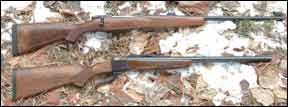
Another easy trick is to shoot your big rifle standing up, not from the bench. Or you could construct a standing bench, so you can have the steadiness of a bench rest, but keep your body upright so you can give with the kick. Be sure the rifle has a large butt area and a properly set up recoil pad. Pads can be too soft. The rifle does not have to fire the hottest round every time you press the trigger. You can easily make your own lightly loaded rounds, and thereby learn to control the rifle by reducing its recoil, and gradually working up to full-power loads. Cast-bullet loads are ideal for this. Another trick is to put a bag of lead shot between the rifle’s butt and your shoulder, a trick we used in this test. Be sure the rifle doesn’t slip off the bag just as you squeeze the trigger.
A reader suggested we take a look at the difference between a classy single-shot rifle and a magazine rifle for the 416 Rigby. This reader had a single-shot, was considering a magazine, and wanted to know what we thought of each type. Would he be better off with the magazine rifle? Each has distinct advantages. The single-shot has one huge advantage over the magazine rifle: It’s shorter, and hence much more easily managed in thick brush, where such rifles are commonly employed. They can also be built lighter, but we’ve already discussed weight. With the single-shot rifle, after one shot you know it’s time to reload. You may make the deadly mistake of thinking you have one more round in your magazine when in fact you don’t, and these big rifles are usually used on game that can easily kill you if you make such a mistake. The single loader can be very quickly reloaded with practice, assuming it has a proper ejector mechanism. Actually, even without such a device, if the rifle is a good one and the round is not a high-pressure round, reloads can be near instantaneous. You open the action when the rifle is in recoil, i.e., pointed at the sky, and the round ought to fall out. Bring it down out of recoil, grab the next round from between the fingers on the forend, drop it into the chamber and close the action.
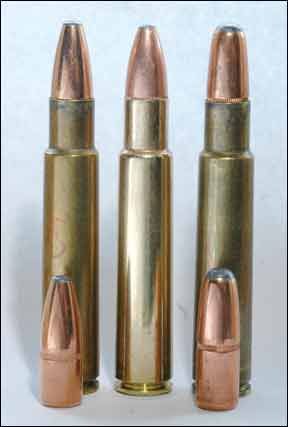
Nearly eight years ago we looked at a similar pairing, and threw in a high-dollar Dakota rifle to make a trio. The Dakota got a Best Buy (A) rating, but the Ruger and CZ had problems. We failed them both with Don’t Buy ratings. We thought it was time to see if improvements had been made along the way, and if we had perhaps been too harsh back then. But we’ll still look at these two as serious rifles, not just fun guns for the dangerous-game-wannabe hunter.
With that brief introduction, let’s see what we have to test this month. We acquired a CZ 550 American Safari with fancy wood ($1907) and a Ruger Number One Tropical ($1242). We tested them with new Federal Fusion Safari 400-grain semi-pointed bullets, our handload featuring a 350-grain Speer Mag Tips at modest velocity, and another handload that was a close approximation to the original 416 Rigby load, with round-nose 400-grain Hornady JRN bullets at about 2350 fps. Here’s what we found.
CZ 550 American Safari 416 Rigby, $1907
This rifle is available with either plain or fancy American walnut stock. The version with the lower-grade wood is but $1280, so you’re nicked $600 for finer wood. Fancy gun wood has become ungodly expensive, so the extra price was not too surprising. Fancy wood for a hard-kicking rifle has great demands put on it. This CZ’s wood was pretty fine (American) black walnut, which would not be our first choice for a custom rifle, but if you want a CZ with American styling, that’s what you get. The wood had good figure in the butt area, and some tiger striping on the forend. The grain direction at the wrist is always critical. We could not be sure how good this one was at the wrist, though it was attractive. However, the stock was thick enough at the wrist — maybe too thick — to give good strength. If you want an unbreakable Kevlar-stocked version of the CZ 550, it’s $1656. We will, in the future, attempt to evaluate the Turkish-walnut-stocked 550 Safari Magnum (not American).
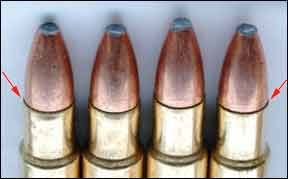
The rifle was big. Its 25-inch barrel was no lightweight. The rifle tipped the scales at 9.9 pounds, which we thought was just about right. It came with QD scope rings, and a scope would add close to a pound to the rifle, which would make recoil that much easier to take. We thought the iron sights were excellent, and we used them for our testing. There was a wide-angle vee rear standard for 100 yards, folding leaves for 200 and 300, and the front was a bead protected by a hood with a hole for light to get at the sight. The trigger was a single-set, which most of us love. We did all the test firing without the use of the single-set, but we know it’s handy in some types of hunting situations, such as watching a river for a particular hippo or croc to show himself, or for an elk to step forward from behind that tree over there. Just keep your finger off the thing until you’re ready to shoot. When set, the trigger took 1 pound to trip it. Normal pull was a clean and smooth 3.5 pounds, much better than what we encountered on our CZ test in August 2004.
The rifle had excellent semi-matte bluing, very fine metal work, a button-release floor plate that we liked, great iron sights, that hood to protect the front bead, decent wood, and a solid feel. Some, including us, have complained that the wood is too bulky. We would like it slimmer, but not everyone wants a skinny stock on a hard-kicking rifle, so we won’t knock anything off for that, this time. We will, however, knock the rifle for having its forward sling-swivel mount on the wood. We believe it belongs on the barrel, ahead of the stock, so it can’t ram your hand in recoil. By the way, CZ offers a left-handed version of the 550 only in 375 caliber. We noticed that all the laminated-stock versions except for the 375 were discontinued in 2011.
The stock is held to the action by three screws, the forward one going into the base of the front sight, whose base is machined out of the actual barrel metal. This is an excellent setup. The stock is reinforced with cross bolts, the checkering is well done, and the stock finish is superb and very durable. Also, the recoil pad is the outstanding Pachmayr Decelerator with nicely rounded edges.
The safety of our 2004 CZ dragged on the bolt shroud, which could have inadvertently put the safety on. That problem is gone. The 25-inch barrel might be too long for some folks, but we liked it. The CZ’s full-length action easily accepted three 416 Rigby cases. A fourth would fit, but the action could not be closed over it. So it’s three plus one.
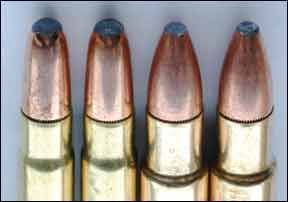
All in all, we’d say the workmanship on this rifle was excellent. The bolt very quickly smoothed up as we examined the rifle prior to shooting it. Unlike the one we tested eight years ago, this one’s bolt was slick and could not be jammed, and it always fed the bottom round Also, the excess wood on the earlier sample doesn’t exist here.
On the range, feeding was reasonably smooth, but ejection, while reliable, didn’t zing the cases out as cleanly as we would have liked. With a serious-use rifle, getting the spent case out of the way is extremely important. Wait ‘til you see what we have to say about the Ruger in this matter. We tried a custom 416 Rigby on a Mauser action, and its ejection was superb. The difference was that the CZ didn’t have the right side of its rear bridge cut with as much clearance as did the 98 Mauser. If we nitpicked here, we’d grind some of the right side of the rear bridge away to make ejection just a bit more crisp. However, it did work as it was.
We particularly liked the easy way the firing pin comes out of the bolt for inspection or replacement. Clear the rifle, then close the bolt so the firing pin is cocked. Then press a small button on the left side of the bolt shroud, hold it, open the bolt and remove the bolt from the rifle. Then you can easily spin out the firing pin. Besides letting you clean the bolt easily, that permits you to safely check all your rounds for feeding prior to an important hunt. The safety, along the right side of the bolt sleeve, moves forward to fire, unlike the earlier 602 version of this rifle. This is the American preference, and we liked it just fine. It also locks the bolt closed when it’s on.
We tested with iron sights at 50 yards. On the range, which was very cold — about 20 degrees on the test day — we began with our modest handload. It put the 350-grain Speers out at just under 2300 fps. We resorted to a 25-pound bag of shot between our shoulder and the recoil pad for the full-power Federal loads. These powerhouses were a huge step greater in kick than our first handload, and were a bit on the too-hot side, we thought.
This lead-shot setup makes for clumsy gun handling, so if you try it, be extremely careful the rifle doesn’t slip off the bag of shot, because it can break your collarbone. It can bruise you more severely, if it slips, than if you had not used lead shot. Yes, we know there are “lead sleds” out there, but the lead-shot bag is several hundreds of dollars cheaper and allows the shooter to have some contact with the rifle. The felt recoil with 25 pounds of lead in the system was zero.
Our 350-grain handloads went into groups just over 2 inches at 50 yards. The hot Federal Fusion Safari loads did a bit better, but things got really good when we tried our original-ballistic handloads. These went into an inch at 50 yards, repeating an experience we had with our personal 375 several years ago, another CZ. That rifle would not shoot the hot new 375 loads well at all, but was a tackdriver with original-ballistic handloads.
We had some problems with the CZ with the Federal loads that did not seem to be the fault of the rifle. After one shot, the next one failed to enter the chamber. The bolt stopped half an inch short of the closing point. We could not find a problem with the rifle. We tried our handloads, and they all went in easily. Then we tried the Fusion again, and got one in the chamber. But the next round failed to enter. We bumped the bolt forward, trying to get the round to slip into the chamber, but it didn’t go. We then pulled the bolt back and hauled out the unfired round. The mouth of the case was hitting the edge of the chamber, and the edge of the case mouth was pushed or rolled back onto itself. If we had forced the round into the chamber it could have stuck without going in all the way, or could have given high pressure if we had been able to fire it.
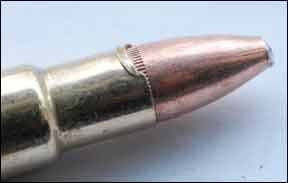
There are two possibilities for this occurrence. One is there might have been a slight burr in the CZ chamber. We could not find one. The other is there was not enough crimp on the Federal cases. In fact we found that to be true. The rounds did not show even crimping, nor were they crimped as much as they could have been. The “fix” for this would be to first make sure the edge of the chamber mouth was not sharp, which could be done easily with a long-enough drill bit of the right diameter, or by polishing with a suitable wood or metal dowel. Then, you could increase the degree of crimp on these cases. The Fusion bullets had cannelures, but the cases were not all uniformly crimped, nor as tightly crimped as we’ve seen on other Federal loads. We believe all dangerous-game ammunition needs to be heavily crimped so the bullets don’t jump the crimp from recoil, or get rammed down into the case from battering in the magazine.
We were easily able to increase the degree of crimp on the new Federal loads with a standard RCBS seating die. After that, none of the cases hung up on the edge of the CZ’s chamber. Did Federal crimp these enough? We don’t know, but some of us don’t think so. Federal makes some of the finest ammunition in the world, but the shooter needs to understand that a slight maladjustment of a factory loading tool combined with a slightly sharp edge in a rifle’s chamber can lead to your rifle/ammo combination failing you in a tight spot. The owner of the rifle could carefully remove any sharp edges in the chamber as noted, and make sure all the ammo has a good crimp, but before you take any rifle against dangerous game, try each and every round of ammunition in the rifle to make sure it feeds, and the bolt closes easily over it. There were no problems with this ammunition in the Ruger.
The Fusion loads were plenty hot. The ammo box claimed the original Rigby ballistics, 400-grain bullet at 2350 fps. Original Rigby loads featured a round-nose bullet, not these spire points, but that’s not much of an issue as long as the pressure is okay. These Federal Fusion Safari loads were coming out of the CZ at 2520 fps on a frigid 20-degree day. The Ruger put them out a bit slower, but still pushing 2500, and that’s well over 100 fps faster than the box stated, and way faster than the original 2350 fps. Imagine what they’d do on a hot day in Africa.
Our Team Said: We think anyone would be proud of this rifle. We thought the CZ’s accuracy was down a bit, but we found a slight looseness in the forward action screw that we had overlooked, and once that was tight, accuracy was plenty good. The target included with the rifle was a bit better than what we experienced with our first two test loads, but we beat it with our original-ballistic hand-load. If we owned this rifle we’d glass bed it to help make sure the fine stock would not split. We would also use our handload that gave original ballistics, and nothing hotter. Original Rigby rifles had long barrels, so there’s no magic speed increase coming from the CZ’s 25-inch tube. We could nitpick the stock thickness, but it comes down to a matter of personal taste in stock dimensions. We’d take this one hunting, unlike the one we tested and failed almost eight years ago. This one worked well. We would also pick it over the single shot tested against it. We rejected some of the Ruger’s features, just as we did in 2004, but could not reject anything about the CZ.
Ruger No. 1 Tropical 1-H 416 Rigby, $1242
Without a doubt Ruger knows how to build an attractive rifle. The classic lines of the Ruger No. 1’s stock — or any Ruger stock, for that matter — are hard to beat. The line from the bottom of the butt stock runs to intersect the bottom edge of the pistol grip, and the grip cap is at right angles to the forward edge of the pistol grip. This is a truly classic American stock. The just-right feel of the pistol grip and the nice-sized forend make for comfortable and easy handling. CZ take note, please. However, this does not imply that Ruger does everything right. This rifle had the old-style Ruger recoil pad, which is to say thin, and hard as a brick. The newer Ruger pads are better, but in our experience even the newer Ruger pads are not good enough on hard-kicking rifles.
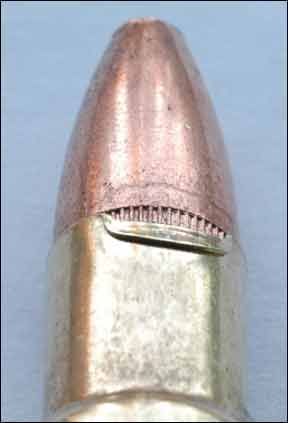
The iron sights leave a lot to be desired, we believe. The rear is a U-notch that can be adjusted for elevation by loosening two small screws. It can also be inverted to give a square notch, but with the front sight being a small bead, we doubt many shooters would prefer a square-notch rear. Where’s the wide-angle V sight, Ruger? And where’s the hood to protect that tiny, vulnerable front sight? Never mind that you can press a button and replace the front sight easily. There’s no trap in the pistol grip for a spare sight, so we’ll guarantee the hunter will not have a replacement foresight with him when, not if, the front sight breaks. We’d bet that many of those who hunt seriously with the 416 Rigby will never put a scope on it. For those who do, the scope has to come off going into dense brush. The front sight on a serious rifle need to be protected, and the Ruger’s is not.
The good stuff includes having the front sling swivel on the barrel. Again, CZ take note. Also there’s the perfect, strong grain through the wrist coupled with excellent and attractive wood in the butt, more good wood on the forend, excellent checkering, a good trigger, and for those who want them, good rings to mount a riflescope. The stock finish was only okay, with lots of open grain, mostly on the butt wood. The CZ’s finish was far superior. The metalwork was very nicely finished and blued, and the caliber identification and the Ruger name on top of the breech and along the barrel were filled with white, which was attractive. The action worked very well, though we would prefer a selective ejector. Each and every time you open the action, the contents of the chamber are kicked out. We’d like the ejector to be selective, and have it raise the case enough to pick the round out easily with the fingers, and only fire the ejector when the hammer has been dropped. But that would take a complete redesign of the Ruger No. 1, which isn’t going to happen.
But don’t worry, if the safety is in the firing position, that case is not going anywhere, whether fired or not. If you open the rifle with it basically horizontal, or maybe with the muzzle slightly depressed, the fired case will strike the safety and rebound right back into the chamber. If you’re lucky or smart and open the rifle with the muzzle pointed skyward, the empty might fall out. But if you’re really smart you’ll take a Dremel cut-off tool or grinding wheel to the forward part of the safety and remove that part of it that interferes with proper ejection when the safety is in the firing position. Ruger needs to fix this, as we’ve said here since at least 2004.
We took this problem to Ruger. We got the response from one of their personnel, a serious user of Ruger No. 1s, that the Ruger’s protruding safety helps keeps the hot ejected brass off the shooter’s face and out of his shirt. Apparently this fellow had experienced such troubles. However, this means Ruger has ignored, and continues to ignore, the classic single shot falling-block rifles from makers like Farquharson, Alexander Henry, Daniel Fraser, and a few others, all of which have absolutely nothing in the way that would impede the outward travel, by extraction or ejection, of a spent cartridge. This Ruger man said he had developed the habit of tipping the rifle to get the fired case to fall out of the rifle. To all this we say, Balderdash! We tried ejecting an empty case some 50-60 times, in a variety of angles, with the safety both on and off. With the Ruger safety in the On position, it doesn’t interfere with ejection. In all cases, when the safety was thus out of the way, the empties slid over the right side of the stock (right-handed shooter) and fell away. We never, repeat never, were struck in the face by the ejected round. We have the habit of lifting our face slightly, much as when operating a bolt fast. But when we put the safety on, way more often than not, the cartridge failed to clear the rifle, even when the muzzle was elevated drastically. It took a heck of a tip to get the dead round out of the gutter. Also, the case as often as not would bounce off the ejector to the left and come down our shirt. It’s frustrating when we bring this to the attention of the corporation and they come back with a lame excuse as to why they can’t be bothered to change it for the better. Are we alone in disliking this feature? We doubt it.
This Ruger employee also noted he likes to feel the front of the safety to check if it’s on or off by the overlap at the front. In two seconds we learned to tell the position of the safety by feeling how far the back of it was from the rear of the tang. Also, those of us with lots of experience with tang-safetied firearms have learned to shove the safety forward when mounting the gun. That way the gun is always ready to fire when it’s shouldered, and you need not think about it, or fumble for the safety’s position.
Nor were this fellow’s comments about the recoil pad to our liking. Ruger puts, as we were told, a “reasonable” pad and rear sight on the rifle, knowing full well many will change them. We beg to differ. If the stuff is excellent to begin with, many will never make changes. If the stock needs to be shortened, the shooter can use the same recoil pad if it’s a good one — as is the one on the CZ. And what about that square-notch, rear-sight option? The Ruger man said nothing about that nonsense. We’d bet not one in ten owners of the Ruger No. 1 know there’s a square-notch option on that little rear tab, but if there was a vee-notch sight there, we’d bet lots of shooters would use it. The vee gives a more definite, and faster, centering to the front bead than the U-notch. Though we did good work with the existing sight, it was not fast work. We failed to ask about a front-sight hood, but would bet the answer again would be that Ruger will never make changes that would cost Ruger a cent.
The trigger pull was excellent, and that helped us do good work with the rifle. On the range we again used the bag of lead shot to absorb the worst recoil. The Ruger put the hot Federal loads into about an inch at 50 yards. It didn’t like our lighter handload, just as the CZ did not. But the Ruger put our 400-grain RN handload into about an inch. The rifle had all the accuracy anyone could want, we thought. We were able to do the test shooting with our 400-grain handload without the aid of the lead shot because we were wearing heavy winter clothing. But in the heat of the tropical sun, not many big game hunters will be wearing three shirts and a heavy winter coat for padding. Of course they won’t be shooting much from a bench, except for testing and familiarization with the rifle before any hunt.
Our Team Said: The Ruger No. 1 desperately needs a better recoil pad, a shorter front to the safety lever, protection for the front sight, and a better attitude by the manufacturer. There were no problems at all with firing and basic function with the Ruger No. 1 during our limited testing, other than our complaints about its ejection. Sure, you can live with that, but the Ruger No. 1 has been around a long time. One would think it would be somewhat more refined by now. One would be wrong. We said almost the exact same thing eight years ago. We liked its looks, performance, and thought it had enough weight. The Federal ammo did not hang up going into the chamber, but each and every fired case hit the safety on the way out. That’s not right, and we believe Ruger needs to address this situation. The balance was okay, but we would have liked to a bit more of the rifle’s weight between the hands. The long barrel gave this rifle a somewhat muzzle-heavy feel. With some post-purchase trickery such as cutting a vee-notch sight into the little rear sight insert or installing a better rear sight, redoing the recoil pad, re-contouring the front of the safety button, and — somehow — adding a hood to the front sight, this would be a really good rifle. With more weight between the hands, it could become a great rifle. If it had all these things, we might even pick it over a magazine rifle for its shortness, simplicity of action, and fast, easy handling. But all that costs extra money. We suspect it could be relatively easy for Ruger to fix all the little problems we’ve consistently found with the No. 1 that keep if from being a serious dangerous-game rifle. We doubt they ever will.
0212-416-RIGBY-ACC-AND-CHRONO.pdf


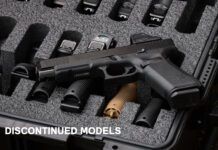

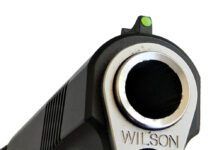






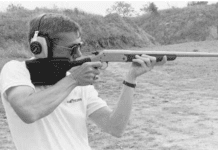







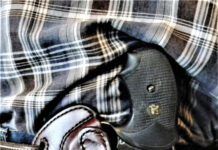

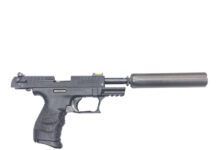




I’ve found the ‘know it all we ain’t changing it’ attitude prevalent. With the XBolt design one can’t remove the firing pin without a vice or pliers. All they had to do was drill a 1/16 hole in side of the pin base.
Love the CZ 550. Have several